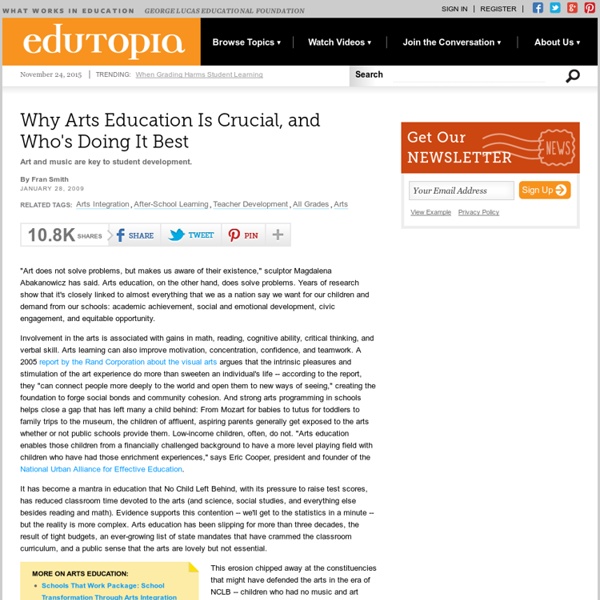Facilities Construction and Reform - A Blueprint For Great Schools
Strategy No. 9 in A Blueprint For Great Schools report from the Transition Advisory Team dated August 9, 2011. Back to A Blueprint For Great Schools Table of Contents Home Page A substantial body of research correlates the impact of school facilities on educational achievement. Over the last decade, these studies have focused on architectural components such as air quality, temperature control, acoustics, daylight/illumination, and out-of-date equipment and furnishings, and are widely reported in the school facility literature.35 Recognizing the important role of facilities in student achievement, the state has provided capital assistance to Local Educational Agencies (LEAs) for over 60 years. Although the state has invested over $35 billion in K-higher education school facilities since 2002 with the passage of Propositions 1D, 55 and 47, the state does not have a system-wide facility inventory to make priority decisions for determining where school facility investments are most needed.
Teach21 Project Based Learning
Given instruction in vocal technique, students will sing a wide variety of music styles, using proper intonation, dynamics, balance and blend and will evaluate their own performance. Before the Project The teacher should expose the choir to various styles of music (blues, Broadway tunes, spirituals, etc.) Once they have rehearsed different techniques relating to various styles, students may want to help in the decision making of which musical to perform. The teacher should pick musicals that fit the ranges of the students involved. The students should be given various musical examples to sing. Some middle school students may have not functioned in a project based classroom. Included in this PBL are a Group Observation Checklist and a Collaboration Rubric to help with assessing the students work in a group. There may need to be instruction on following cues, breathing, phrasing or interpretation of the lyrics with regard to style. During the Project After the Project
The arts
The arts represent an outlet of expression, that is usually influenced by culture and which in turn helps to change culture. As such, the arts are a physical manifestation of the internal creative impulse. Major constituents of the arts include literature – including poetry, novels and short stories, and epics; performing arts – among them music, dance, and theatre; culinary arts such as baking, chocolatiering, and winemaking; media arts like photography and cinematography, and visual arts – including drawing, painting, and sculpting. Some art forms combine a visual element with performance (e.g. film) and the written word (e.g. comics). From prehistoric cave paintings to modern day films, art serves as a vessel for storytelling and conveying mankind's relationship with its environment. Definition[edit] In its most basic abstract definition, art is a documented expression of a sentient being through or on an accessible medium so that anyone can view, hear or experience it. History[edit]
Spectacle
In general, spectacle refers to an event that is memorable for the appearance it creates. Derived in Middle English from c. 1340 as "specially prepared or arranged display" it was borrowed from Old French spectacle, itself a reflection of the Latin spectaculum "a show" from spectare "to view, watch" frequentative form of specere "to look at."[1] The word spectacle has also been a term of art in theater dating from the 17th century in English drama. Ancient cultural origins[edit] The term originated from the Roman practice of staging circuses, in the tradition of the Roman elite of providing "bread and circuses" to maintain civil order by distracting the populace from underlying social and economic problems. Low and high culture[edit] Spectacle operates in two contexts simultaneously. Low and high culture mingled in the spectacle as long as folk productions of spectacle were possible. The Masque and spectacle[edit] The Hollywood Spectacular[edit] Spectacle and Society[edit] See also[edit]
The Society of the Spectacle
The Society of the Spectacle (French: La Société du spectacle) is a work of philosophy and Marxist critical theory by Guy Debord. It was first published during 1967 in France. Book structure[edit] The work is a series of 221 short theses. Ideas[edit] Degradation of human life[edit] Debord traces the development of a modern society in which authentic social life has been replaced with its representation: "All that once was directly lived has become mere representation The spectacle is the inverted image of society in which relations between commodities have supplanted relations between people, in which "passive identification with the spectacle supplants genuine activity". Debord's aim and proposal is "to wake up the spectator who has been drugged by spectacular images," "through radical action in the form of the construction of situations," "situations that bring a revolutionary reordering of life, politics, and art". Mass media and commodity fetishism[edit] Translations and editions[edit]



